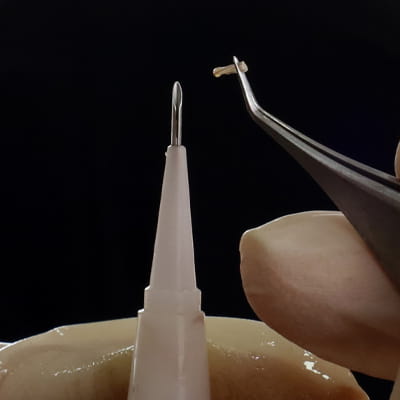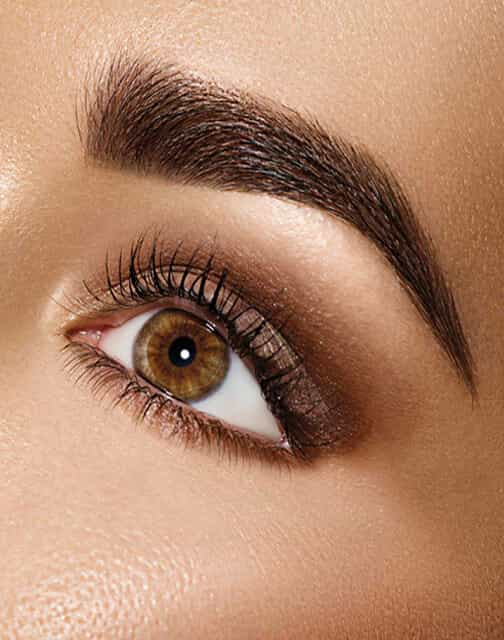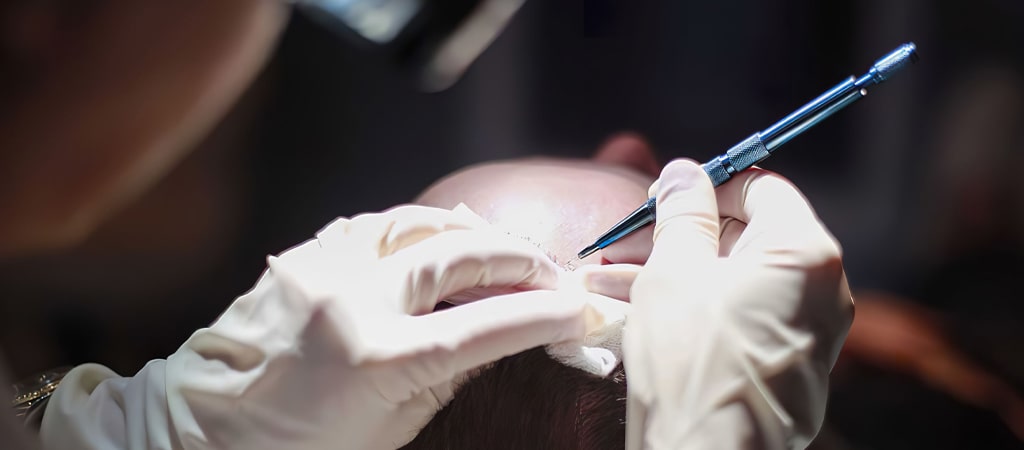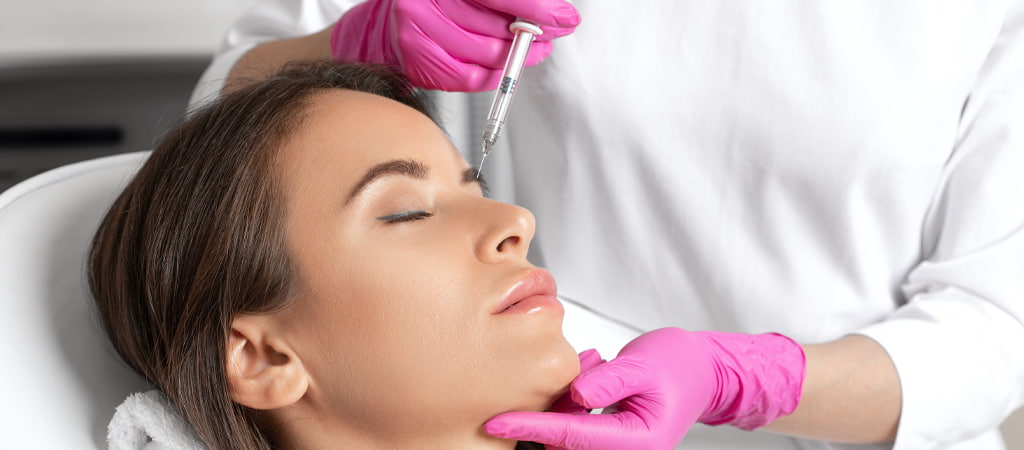What is DHI Hair Transplant?

DHI Hair Transplantation (Direct Hair Implantation), is a minimally invasive hair transplantation method.
This method is applied by direct penetration with an implanter pen (choi pen). The biggest difference of the DHI technique, which is considered as a new method based on the FUE hair transplantation method, is that there is no need for a channel opening before an actual transplantation.
In this method, the grafts (hair follicles) taken from the donor area with a micromotor are directly transplanted to the area to be transplanted without opening the canal.
DHI hair transplantation is one of the most advantageous methods used in hair transplantation. People may experience hair loss due to various reasons such as nutrition, hormone irregularity, genetic factors, stress and environmental conditions. Hair loss is a problem that affects both men and women. Especially in men, the decrease in testosterone hormone with age causes hair loss.
DHI hair transplantation has been a preferred method in recent years, as healthy hair follicles in the skin are removed without damaging the hair, more hair can be transplanted in a single session and the healing process is also very short.
The aim is to obtain a natural appearance and close the areas where alopecia (baldness) has developed by intensifying the follicles.
Before a DHI hair transplantation, the hair type and fullness, hair loss severity, condition of healthy hair follicles, the area to be transplanted and the characteristics of the area to be used as donor are examined by specialists. Hair follicles in the nape of the neck and above the ears are generally preferred as donor areas.
With a DHI hair transplantation procedure; local anesthesia is applied to the area to be treated. Hair follicles are extracted from the nape of the neck with a micro motor device and kept in a special solution for protection until the required amount of hair is collected from the area with alopecia. The hair is then transplanted according to the direction of hair growth.

Who is DHI hair transplantation suitable for?
DHI Hair transplantation is suitable for male and females over the age of 18 who are experiencing hair loss.
A specialist will determine whether a patient is suitable for a DHI hair transplantation treatment after a detailed examination.
The important factors that determine the eligibility of a patient undergoing the treatment include, patients health status and medical history, diseases, thickness of the hair and the depth of the hair follicle.
The DHI method is also favored as the procedure allows for transplantation without the need to shave.
How is a Hair Transplantation procedure performed?
The application is performed under local anesthesia. The follicles collected from the nape and the area above the ear, which is preferred as the donor area, are directly transplanted to the problem area with a medical pen. In order to keep the hair alive, the hair follicles collected with the micromotor are kept in a special solution until graft harvesting is completed. During the transplantation phase, the grafts are placed one by one in the choi pen and transplanted in the area of hair loss.
Due to its mechanical feature, the Choi pen allows the easy opening of the channel and hair follicle placement at the same time. The Choi pen has more than one tip and is individually selected by taking into account factors such as the length of the hair strand and graft thickness before transplantation.
With this method, the procedure is performed without damaging healthy hair follicles.
The whole procedure lasts approximately 8-9 hours – the grafts remain healthy and the retention rate of the transplanted roots is quite high.
What’s the recovery process after a hair transplant?
The practitioner will perform a control examination right after the operation to ensure a smooth recovery.
The recovery period after a DHI hair transplantation treatment is approximately 10-15 days. During this period, the crust formed in the transplantation area begins to fall off. Hair can be washed from the 4th day onwards. Within 15 days, the scalp returns to approximately normal appearance.
Weak hair that grows in about 1-2 months is shed with shock shedding. After 3 months, new hair starts to grow. In 8-12 months, all permanent hair grows.
After treatment, it is important to protect the area of treated hair follicles from any potential damage. This will help achieve a faster recovery and maximize overall results .
Lots of rest is recommended for 3 days after the procedure and special care should be taken with sleeping positions to avoid friction.
During the first 4 weeks after hair transplantation, heavy exercise, tobacco and alcohol consumption, exposure to direct sunlight, hot showers, saunas, Turkish baths, solariums, pools and beaches should all be avoided.
The practitioner should also prescribe lotions and aftercare treatments to aid in the recovery process, along with vitamin supplements for the healing and promotion of strong hair structure.
Advantages of the DHI Hair Transplantation Technique
The most common advantage of a DHI hair transplantation treatment is that it provides a naturally healthy and strong hair appearance.
Other advantages of are as follows:
- Tissue damage in the hair root is low.
- The risk of bleeding is low as there is no incision in the transplantation area.
- Acts as a base for future transplants if required or desired.
- The healing process after the procedure is fast.
- The risk of root loss is very low.
- The duration of hair follicles in the external environment is very short.
- The treatment does not require shaving.
What is Unshaven Hair Transplantation?

With an Unshaven hair transplantation treatment, only the donor area (nape and above the ear) is shaved, the area to be transplanted is not shaved. DHI technique is used in this transplantation. In the unshaven transplantation method, thickening is provided between the sparse hair. The biggest advantage is that hair transplantation is performed without any change in the appearance of the person. Some treatments can cause shock fallout after transplantation.
Who Is Unshaved Hair Transplantation Suitable For?
Hair loss can be the reason for psychological discomfort and lack of confidence in individuals in terms of general appearance. Treatment such as DHI, FUE and Sapphire FUE can be the solution to these problems.
One of the most preferred methods in hair transplantation of late, is the Unshaven hair transplantation.
Individuals interested in undergoing this procedure are first evaluated according to the Norwood scale. This application is a method preferred for localized hair loss, less openness and predominantly for women.
It is a procedure that can be easily applied in hair loss and general hair thinning.
This treatment has a low graft requirement and cannot be performed to cases with a high graft requirement.
DHI Hair Transplantation FAQ’s
Is the age limit important in DHI hair transplantation?
Is the age limit important in DHI hair transplantation?
This procedure is a treatment applied for patients over the age of 18. However, what is important in the treatment is the type of hair loss. If there is less than 50 percent density in the hair loss area, hair transplantation is recommended.
Are there any health risks associated with hair transplantation?
Are there any health risks associated with hair transplantation?
During the initial consultation, the practitioner will determine whether the person is suitable for transplantation. Medications used, chronic diseases, if any, and general health status are examined.
DHI or FUE method?
DHI or FUE method?
While both methods aim for permanent hair growth, there are some differences these include:
DHI treatment has a shorter recovery time
DHI has a lower risk of bleeding compared to FUE
With a FUE treatment a larger area can be treated, whereas a DHI treatment is more suitable to add fullness.
With a FUE treatment, the whole head needs to be shaved for the procedure, with a DHI treatment, only the donor area is shaved.
A full FUE treatment can take between 6-8 hours, a DHI treatment takes much longer to complete.
The appropriate treatment will be decided by the practitioner at the initial consultation.
Who is suitable for DHI hair transplantation?
Who is suitable for DHI hair transplantation?
Men and Women over the age of 18 years old experiencing complete hair loss.
Does a DHI hair transplantation procedure give permanent results?
Does a DHI hair transplantation procedure give permanent results?
Yes. Regardless of the method, hair transplantation is a permanent solution for hair loss.
Can hair transplantation be repeated?
Can hair transplantation be repeated?
Yes. Hair transplantation can be repeated after 6 months and when the donor area has healed and recovered.
Can the donor be a different person?
Can the donor be a different person?
No. Hair follicles must be taken from the person undergoing hair transplantation. Roots belonging to someone else cannot be used.





